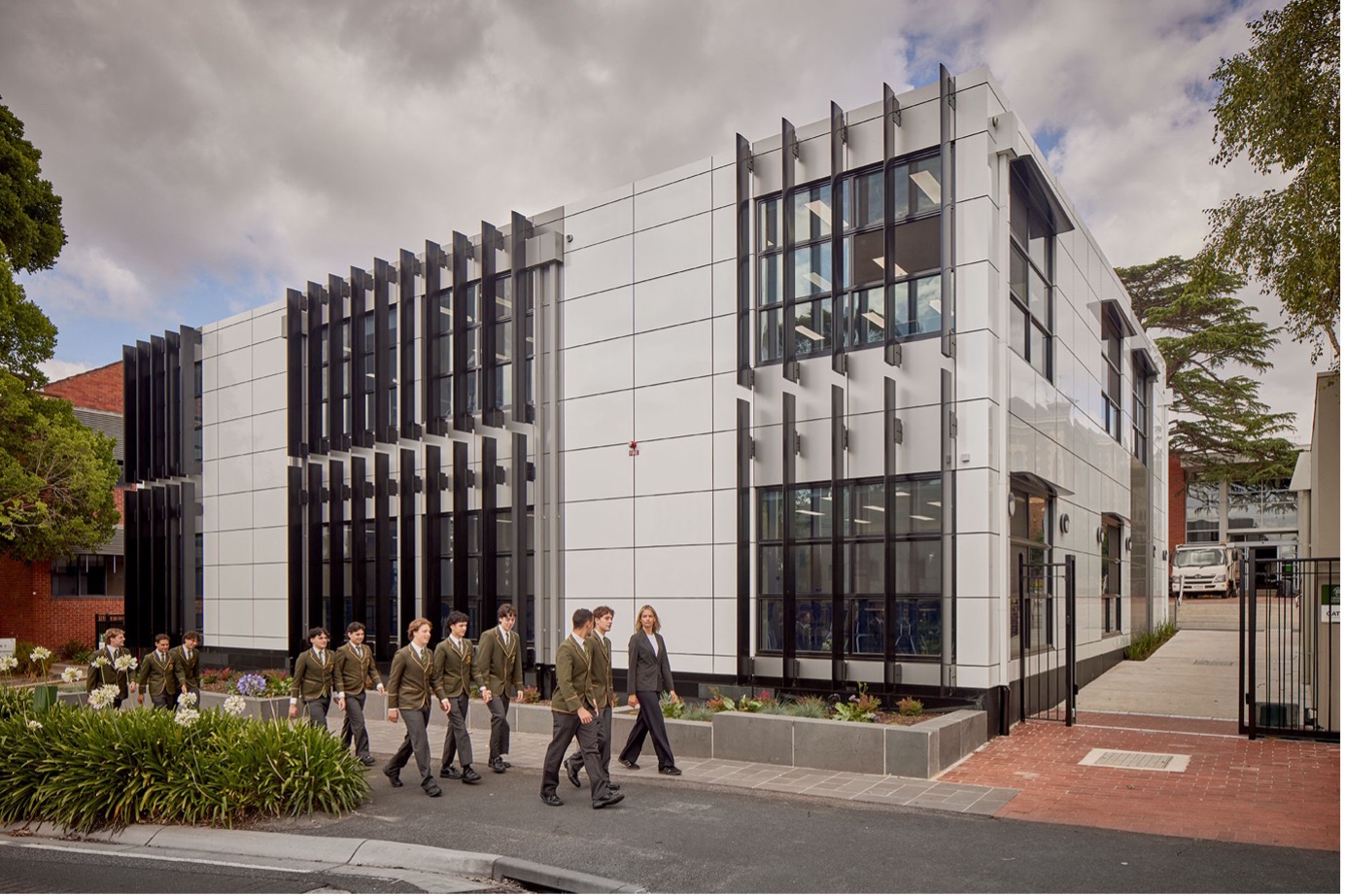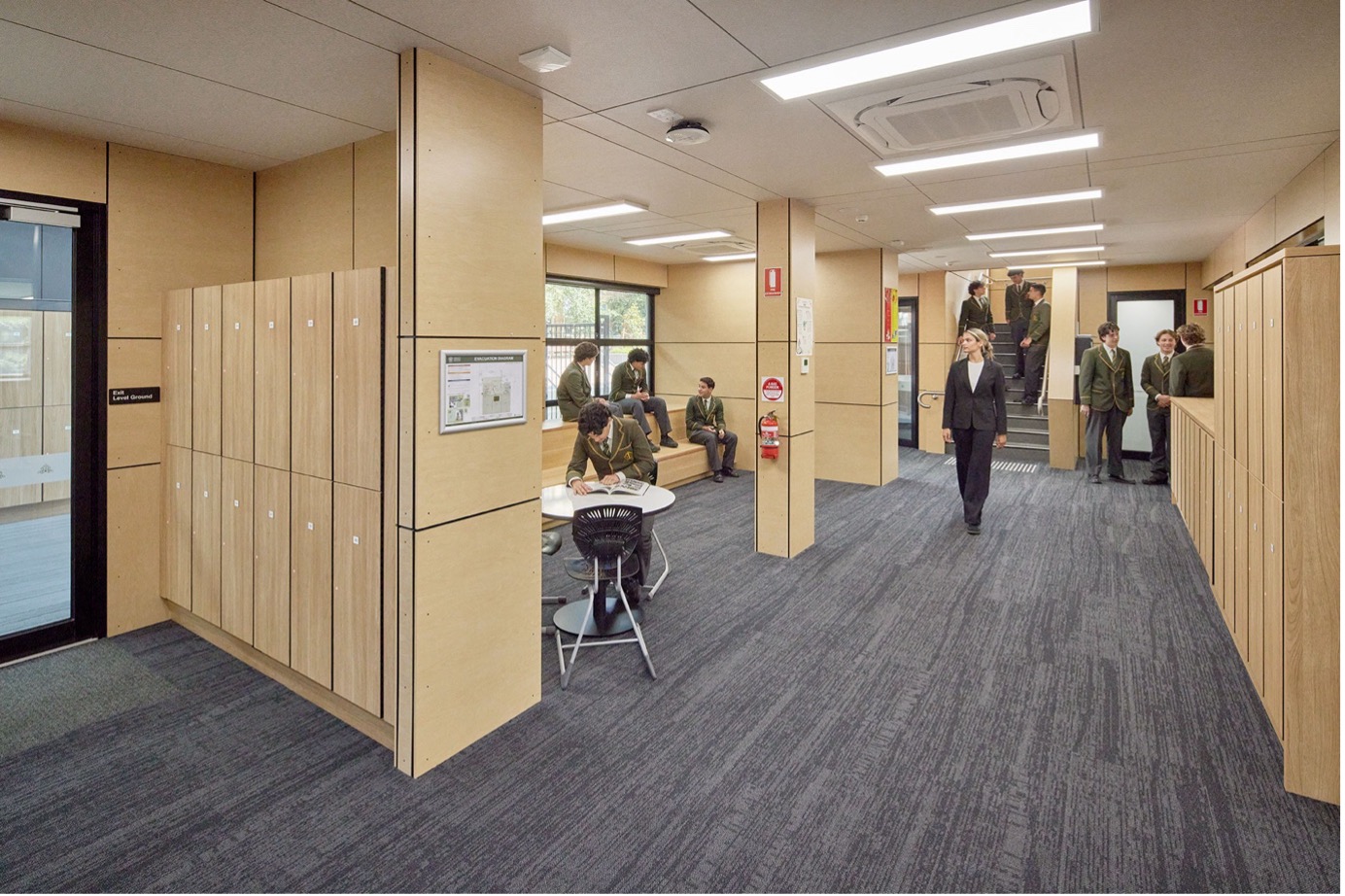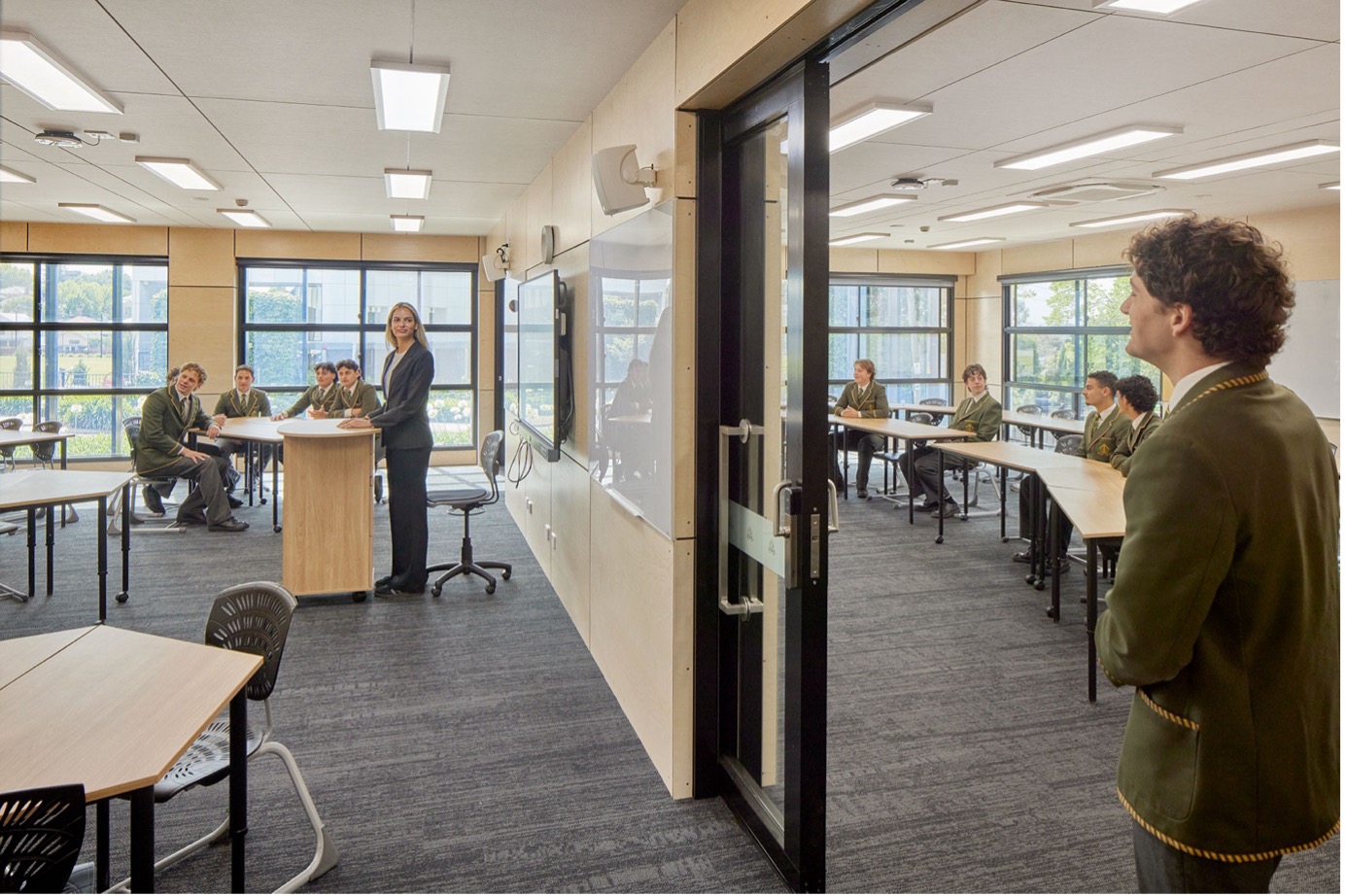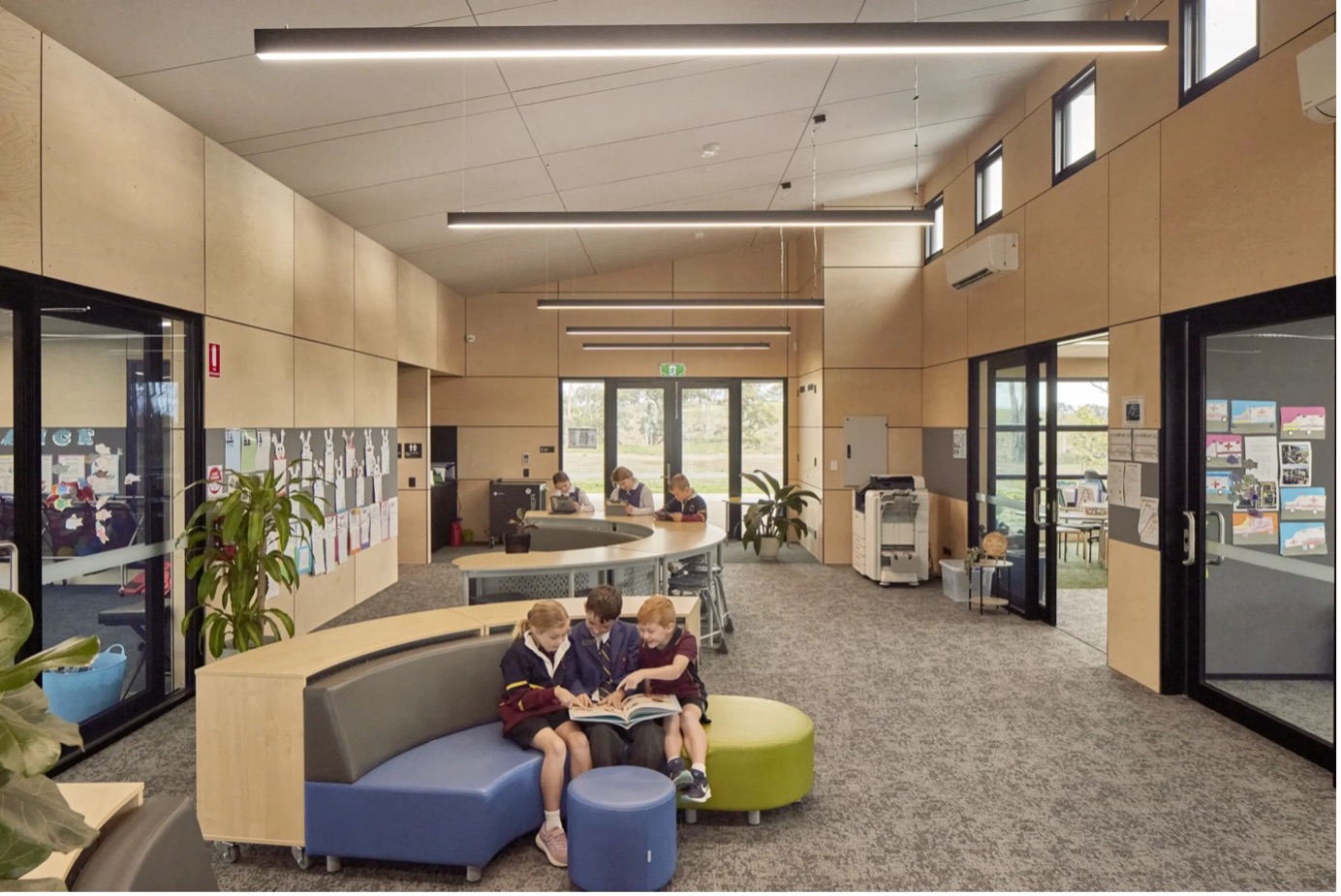For many schools, the term modular buildings still brings to mind outdated images of temporary boxes, basic demountable classrooms and quick-fix portable rooms. However, across Australia modular classroom builds are transforming how schools plan, design, and deliver new learning spaces. Harwyn is at the forefront: revolutionising and redefining what’s possible.
Modular building today is not what it used to be. It stands as modern, architectural, sustainable, and built to last. Harwyn creates environments that inspire and do so rapidly, beautifully, and without compromise.
For schools looking to respond to changing enrolments, deliver high-quality learning environments quickly, and minimise disruption, modular classrooms are increasingly the smart choice. Harwyn’s approach combines speed, flexibility, and architectural quality, making it ideal for modern Australian education settings striving to be the best they can be.
While modular classroom construction, also referred to as Modern Methods of Construction (MMC), is on the rise, misconceptions continue to linger. We’re exploring some of the key myths modular, and sharing insights on how Harwyn is setting a new benchmark for modular classrooms and modular education spaces across Australia.
Misconception 1: Modular buildings all look the same
For decades, many Australian schools relied on demountable classrooms and relocatable classrooms or ‘portables’ that were designed to be temporary, not inspiring.
Rows of identical, boxy structures (often installed as a stopgap) have created a persistent perception that modular equals bland, uniform, and second-rate.
Modern modular design and the approach we take at Harwyn tells a very different story.
Today, our modular education environments are architecturally customised to reflect the character and needs of each school. They can be sleek and contemporary or designed to blend effortlessly with existing heritage buildings.
Natural light, acoustic treatments, and high-quality finishes are now standard features, not exceptions.

Trinity Grammar School: Aesthetic excellence
Trinity Grammar’s modular learning spaces are a perfect example of how modular can elevate a campus. The school needed additional classrooms that matched the quality and aesthetic of their existing environment. Harwyn worked closely with the team at Trinity Grammar to deliver an architecturally designed modular classroom space that aligns beautifully with the surrounding campus.
Internally, the spaces are open, light-filled, and purpose-built for learning. Externally, they demonstrate that modular buildings can be bespoke and premium, not cookie-cutter. This is modular at its best.

Misconception 2: Modular classroom construction is inflexible and restrictive
Beyond the aesthetic aspects, many assume modular buildings are uniform boxes with little architectural freedom.
In reality, Harwyn modular classrooms offer significant flexibility in layout, façade treatments, material selection, and interior finishes. Whether harmonising with existing building and style, or creating bold contemporary designs, modular constructions provide schools with far more creative control than they anticipate.
Again, our collaboration with Trinity Grammar School demonstrates this flexibility. The school required learning spaces to fit within specific size constraints while still providing the required number of classrooms and breakout spaces. Harwyn delivered modular education spaces that ticked every box, demonstrating the impressive bespoke capabilities of our modular classrooms and school buildings.
Additionally, modular spaces can be expanded, reconfigured, or relocated, allowing schools to adapt as enrolment and educational needs evolve. Modular spaces also cater to specific needs like acoustic music pods or specially equipped wet areas for certain subjects. This adaptability ensures flexibility without compromising on design or performance, making Harwyn modular classrooms a smart long-term investment.

Misconception 3: Modular classrooms are temporary and low quality
Another common myth: modular school buildings are constructed with inferior, less durable materials compared to traditional methods. This misconception may stem from older demountable classrooms but no longer applies today. And certainly not with Harwyn!
Our modular buildings utilise high-quality, low-maintenance materials meticulously selected for durability and performance. Factory-based precision manufacturing eliminates many quality-affecting variables present on traditional construction sites, resulting in buildings that are consistently well-built, acoustically sound, and finished to a premium standard.
St Paul’s Anglican Grammar School: Premium finishes
The St Paul’s project is a strong example of the calibre of finish that modular construction can achieve. This large, permanent education facility was manufactured off-site with strict quality control, allowing Harwyn to deliver a consistently high standard of workmanship and detailing.

The end result is a contemporary, high-quality building that stands shoulder-to-shoulder with traditionally built structures, reinforcing that ‘low quality’ is definitely a myth when it comes to Harwyn’s modern modular education spaces.

The benefits of modular classroom buildings for schools
For schools, choosing the right construction method extends beyond budget considerations. It involves minimising disruption, ensuring spaces are ready when needed, and creating environments that align with school identities, values and aspirations.
Harwyn modular classrooms offer:
- Speed: Built off-site and installed in days, with overall delivery measured in weeks, not months.
- Fixed costs: Fixed pricing provides financial clarity from the outset.
- Minimal Disruption: No heavy works during class time, with zero impact on student safety.
- High quality: Precision manufacturing and premium materials deliver consistently high-quality finishes.
- Design flexibility: Customisable to reflect each school’s unique vision and environment.
- Long-term adaptability: Expandable and relocatable to meet evolving enrolments and learning needs.
- Acoustic excellence: Optimal acoustics maximise learner engagement, making them ideal options for music rooms and specialist spaces.
- Sustainability: Controlled construction reduces waste and incorporates energy-efficient designs.
By combining these advantages with Harwyn’s architectural expertise, modular classrooms emerge as more than just portable solutions. They represent a smarter, quicker, and more sustainable building approach.
Modern Methods of Construction for a smarter future
Modern Methods of Construction are advancing the future of building across sectors, especially in education. Modular construction allows schools to address enrolment increases and build state-of-the-art facilities far quicker than traditional methods.
Harwyn’s Australian-made modular solutions are crafted to endure, helping schools envision new possibilities — from relocatable classrooms that defy their temporary nature to permanent multi-storey educational facilities.
For schools across Australia, investing in Harwyn modular classrooms represents a smart, future-focused choice.
Our team at Harwyn is here to support you to reimagine your education space.
Reach out with any questions or see more projects here.